…and drank the Water that extinguished the Fire that burnt the Stick that beat the Dog that bit the Cat that ate the Goat that my father bought for two zuzim. Chad Gadya
Animator. Director. Artist. Scapegoat.
…and drank the Water that extinguished the Fire that burnt the Stick that beat the Dog that bit the Cat that ate the Goat that my father bought for two zuzim. Chad Gadya
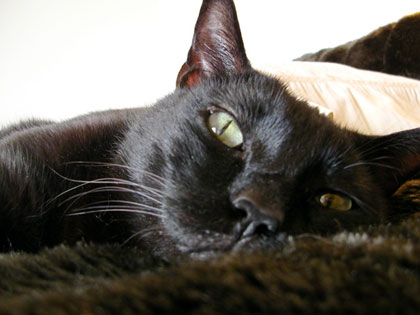
I knew it had to happen some day. Bruno stopped eating a little over a week ago and when his decline went into suffering (his purr box broke near the end, it was heartbreaking) we were lucky enough to get an angelic female vet and assistant (Bruno likes women and is afraid of men) to perform the kindest, gentlest euthanasia at at home. I have the flu so I was in bed with him his last several days; there’s nothing he would have wanted more, I think. I still have the flu, and a broken heart, but I’m very grateful for the 10 years of love this wonderful cat gave me.
Now with bodies! No matter what I did, the Muse kept guiding me toward symmetry, especially adding the body. Yes it has 5 legs, like a Shedu. Yes it looks like a sheep. A powerful, gigantic, terrifying monster sheep. I still haven’t decided whether it will have 3 faces or 5.


This small project took a long time to finish, because it’s hot and my interest in sewing has dropped precipitously. I only touched it every few days, and then usually for less than an hour at a time. Anyway, it’s done now, and on my floor:
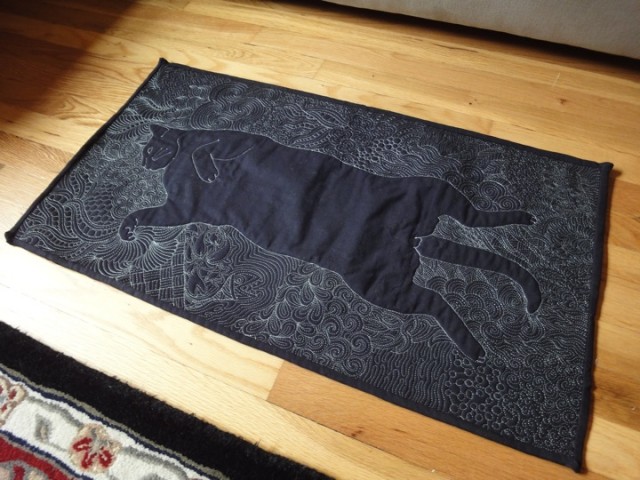 Just like Bruno himself. Here’s the source photo, taken a few years ago but not at all an unusual pose:
Just like Bruno himself. Here’s the source photo, taken a few years ago but not at all an unusual pose:
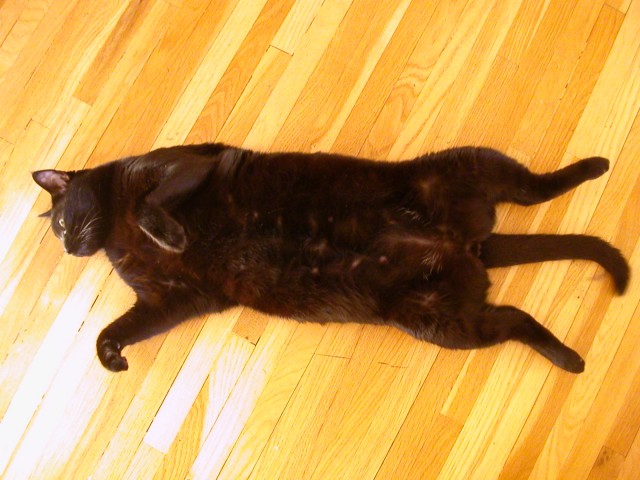 And here’s what it became in fabric and thread:
And here’s what it became in fabric and thread:
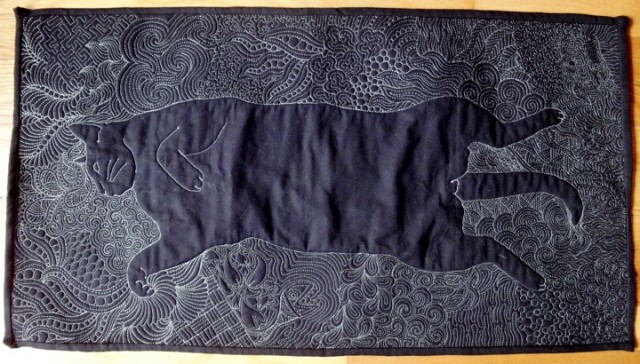 It’s 30.5″ x 17″. Very small compared to what I’ve been making lately. Here’s the back:
It’s 30.5″ x 17″. Very small compared to what I’ve been making lately. Here’s the back:
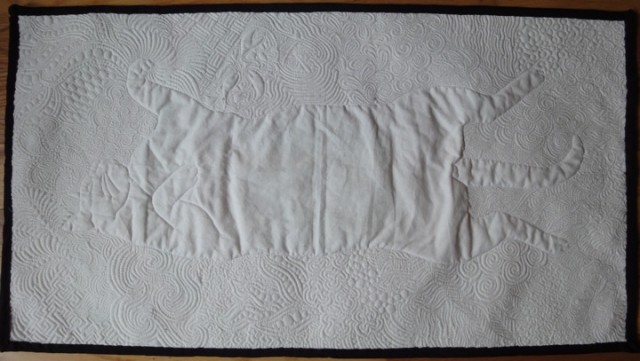 This technique looks a lot better stretched, as in Air/Nude. But since the black side has contrasting thread, it’s OK.
This technique looks a lot better stretched, as in Air/Nude. But since the black side has contrasting thread, it’s OK.
The quilt came out smaller than I expected. Bruno is a huge cat, this quilt leaves the impression of a normal-size cat. Here’s Bruno being an art critic:
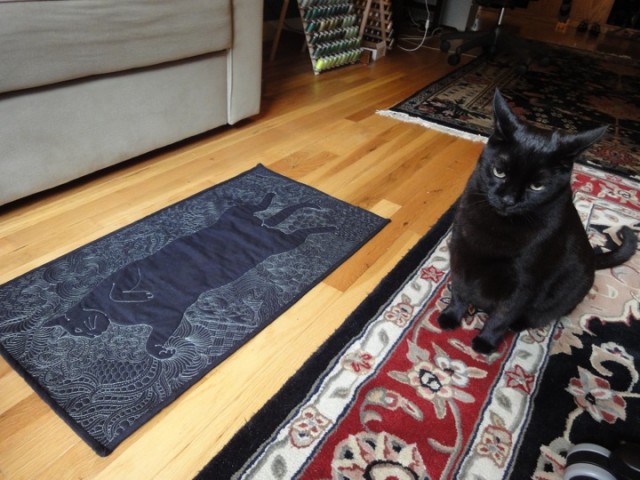
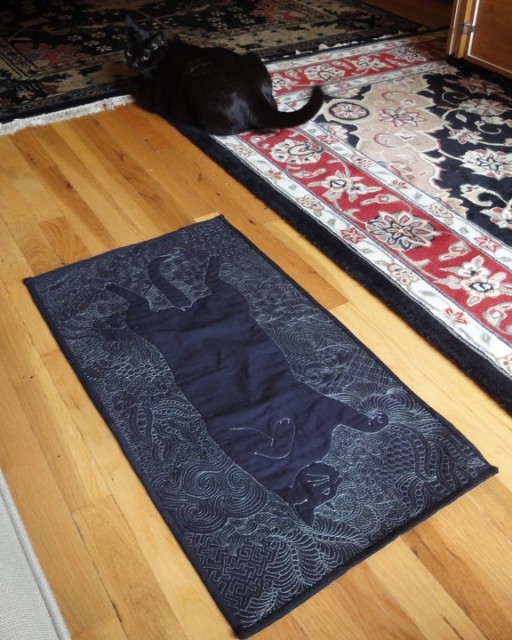 But before I got the camera out he was trying to sit on it, which I interpret as praise.
But before I got the camera out he was trying to sit on it, which I interpret as praise.
The title is “Cat Ruins Video,” but it should be titled “Cat Fixes Video” (or “Man Ruins Cat Video By Turning Off Camera Too Soon.”)
As my contribution to the memosphere, I have created these easy-to-use transparent images which you can overlay atop almost anything. Thanks to Truman False for the idea.
Here’s an example of one of its many uses: